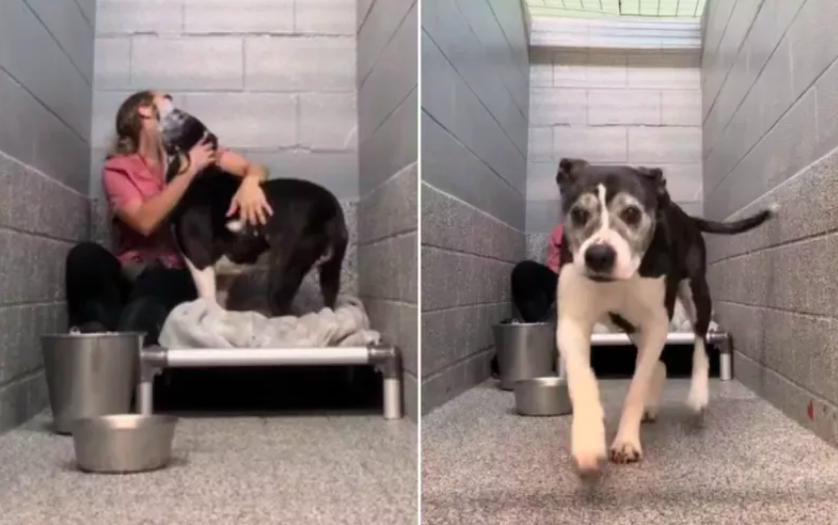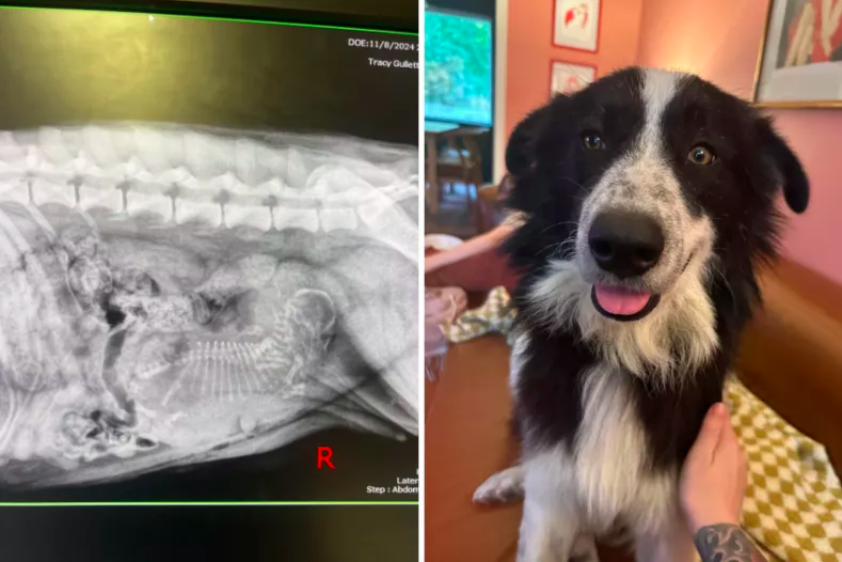Trending Pet Stories
Is Training Your Own Protection Dog Feasible?

Protection dogs are not just pets; they are trained to safeguard their owners and property. Unlike guard dogs, which primarily deter intruders through presence and aggression, protection dogs are trained to assess threats and act appropriately. This training requires a balance of obedience, agility, and controlled aggression.
Choosing the Right Breed
According to this guide about protection dogs the first step in training a protection dog is selecting the appropriate breed. Some breeds are naturally more suited to protection work due to their physical capabilities, temperament, and trainability. Popular breeds for protection training include:
German Shepherds: Known for their intelligence, loyalty, and versatility.
Belgian Malinois: Highly trainable, agile, and driven.
Rottweilers: Strong, confident, and protective.
Doberman Pinschers: Energetic, obedient, and vigilant.
When choosing a breed, consider your living situation, experience with dogs, and the dog’s potential compatibility with your family.
Basic Obedience Training
Before embarking on protection training, your dog must master basic obedience commands. This foundation is crucial for ensuring your dog remains under control at all times. Focus on the following commands:
Sit: Your dog should sit on command and remain seated until released.
Stay: Your dog should stay in place until given a different command.
Come: Your dog should come to you immediately when called.
Heel: Your dog should walk beside you without pulling on the leash.
Consistent, positive reinforcement is key during this phase. Use treats, praise, and play to reward desired behaviors. Training sessions should be short, frequent, and fun to keep your dog engaged.
Socialization
Socialization is essential for any protection dog. A well-socialized dog can distinguish between normal and threatening situations. Introduce your dog to various environments, people, and other animals. This exposure helps your dog remain calm and confident in different settings.
During socialization, monitor your dog’s reactions and provide positive reinforcement when they display appropriate behavior. This process should begin early and continue throughout the dog’s life.
Advanced Obedience Training
Once your dog has mastered basic obedience, you can move on to advanced training. This stage involves more complex commands and scenarios that simulate real-life protection situations. Commands to focus on include:
Attack: Your dog should respond to a specific command to engage a threat.
Release: Your dog should immediately release and cease the attack on command.
Guard: Your dog should protect a designated area or person without engaging unless necessary.
Work with your dog in various environments to ensure they can perform these commands reliably under different circumstances. Consistency and repetition are crucial for success.
Protection Training Techniques
Protection training should be conducted under the guidance of an experienced trainer. This training involves teaching your dog to identify and respond to threats while maintaining control and discipline. Key techniques include:
Bite Work: Your dog learns to bite and hold a target on command. This training uses bite sleeves and suits to protect the trainer and build the dog’s confidence and accuracy.
Agility Training: Enhances your dog’s physical capabilities, enabling them to navigate obstacles and pursue targets effectively.
Scent Work: Your dog learns to identify and track specific scents, aiding in locating intruders or lost individuals.
Throughout this training, maintain a positive and structured environment. Never encourage uncontrolled aggression, as this can lead to dangerous behavior.
Building Confidence and Control
A confident protection dog is a reliable protection dog. Confidence-building exercises are integral to training, helping your dog handle stressful situations calmly. These exercises might include:
Obstacle Courses: Navigating various obstacles improves physical agility and mental resilience.
Controlled Socialization: Introduce your dog to new environments and people in a controlled manner, rewarding calm and confident behavior.
Exposure to Stressful Situations: Gradually expose your dog to loud noises, crowds, and other potential stressors, reinforcing calm behavior with positive reinforcement.
Simultaneously, maintaining control is crucial. Your dog should always respond to your commands, regardless of distractions. Regularly practice obedience drills to reinforce this control.
Ensuring Safety and Legal Compliance
Training a protection dog comes with significant responsibility. Ensuring the safety of those around you and adhering to legal regulations is paramount. In the UK, specific laws govern the ownership and training of protection dogs:
Dangerous Dogs Act 1991: This act outlines restrictions on certain breeds and stipulates that all dogs must be under control in public.
Animal Welfare Act 2006: Owners must ensure their dogs’ welfare needs are met, including proper training and socialization.
Control of Dogs Order 1992: Requires dogs to wear a collar with the owner’s name and address in public places.
Failure to comply with these laws can result in severe penalties, including the seizure of your dog. Always train responsibly and consult with legal experts if needed.
Training Tools and Equipment
Using the right tools and equipment can significantly enhance your training process. Essential items include:
Leashes and Collars: Durable and appropriate for your dog’s size and strength.
Bite Sleeves and Suits: For safe bite work training.
Agility Equipment: Obstacles like tunnels, ramps, and jumps.
Scent Training Kits: For teaching tracking and scent identification.
Invest in high-quality equipment to ensure safety and effectiveness during training sessions.
Working with Professional Trainers
While it’s possible to train a protection dog on your own, working with professional trainers can be immensely beneficial. Experienced trainers can provide:
Expert Guidance: Ensuring your training techniques are effective and safe.
Specialized Training Programs: Tailored to your dog’s needs and your goals.
Hands-On Support: Assistance with challenging aspects of training.
Look for trainers with a proven track record in protection dog training. They can help you navigate the complexities of the process and achieve the best results.
Ongoing Training and Maintenance
Training a protection dog is not a one-time effort but an ongoing commitment. Regular practice and reinforcement are necessary to maintain your dog’s skills and responsiveness. Incorporate training into your daily routine, and periodically revisit advanced techniques to ensure your dog remains proficient.
Health and Well-Being
The health and well-being of your protection dog are paramount. A healthy dog is more effective and reliable. Ensure your dog receives:
Proper Nutrition: A balanced diet appropriate for their age, size, and activity level.
Regular Exercise: Adequate physical activity to maintain fitness and mental stimulation.
Veterinary Care: Regular check-ups, vaccinations, and preventive treatments.
Monitoring your dog’s health can prevent issues that might impair their ability to perform protection tasks.
Building a Strong Bond
A strong bond between you and your protection dog is crucial for effective training. Spend quality time with your dog, engaging in activities that build trust and mutual respect. Positive reinforcement, playtime, and consistent interaction strengthen this bond.
Understanding Your Dog’s Limits
Every dog has its limits, and understanding these is essential for effective training. Pushing your dog beyond their capabilities can lead to stress, fear, and ineffective performance. Recognize signs of fatigue, stress, or discomfort, and adjust training accordingly.
Handling Real-Life Scenarios
Once your dog is trained, handling real-life protection scenarios requires calmness and confidence. In a threatening situation:
Stay Calm: Your dog will take cues from your behavior. Remaining calm helps your dog assess the situation accurately.
Use Commands: Rely on the commands you’ve trained your dog with to manage the situation.
Assess the Threat: Determine if the threat is genuine and requires your dog’s intervention.
Your protection dog should act as a deterrent first and only engage if necessary.
Legal and Ethical Considerations
Training a protection dog comes with ethical responsibilities. Ensure your training methods are humane and respectful. Avoid practices that cause undue stress or harm to your dog. Ethical training builds a reliable and trustworthy protection dog.
Community and Public Perception
Owning a protection dog can impact your community and public perception. Be mindful of how your dog interacts with others and ensure they are seen as a well-behaved and controlled companion. Positive community interactions can enhance the acceptance and understanding of protection dogs.
Joining Protection Dog Communities
Connecting with other protection dog owners and trainers can provide valuable support and insights. Joining local or online communities allows you to share experiences, seek advice, and stay informed about best practices in protection dog training.
Staying Informed
Protection dog training techniques and best practices evolve over time. Stay informed about the latest developments by reading articles, attending workshops, and participating in training seminars. Continuous learning ensures your training methods remain effective and up-to-date.
Training for Specific Threats
In addition to general protection training, consider training your dog for specific threats relevant to your lifestyle. For example, if you travel frequently, train your dog to handle situations in unfamiliar environments. Tailoring training to your unique needs enhances your dog’s effectiveness.
Using Technology in Training
Modern technology can aid in protection dog training. Tools like GPS trackers, training apps, and remote-controlled training aids can enhance your training process. Explore technological solutions that align with your training goals.
Recognizing Success
Training a protection dog is a significant achievement. Recognize and celebrate milestones in your dog’s training journey. Acknowledging progress reinforces positive behavior and motivates continued improvement.
The Role of Professional Evaluations
Periodic evaluations by professional trainers can provide valuable feedback on your dog’s progress. These assessments help identify areas for improvement and ensure your dog remains on track with their training.
Conclusion
Training your own protection dog is a rewarding journey that requires dedication, patience, and knowledge. By following the outlined steps, you can develop a loyal and reliable protector who enhances your security and companionship. Remember to prioritize your dog’s well-being, adhere to legal regulations, and seek professional guidance when needed. With consistent effort and responsible training, your protection dog can become a valuable asset to your safety and peace of mind.
Trending Pet Stories
Dog Shelter’s Longest Resident: Grandma’s Sweetest Reaction to a Visitor

Dog Shelter’s Longest Resident: Grandma’s Sweetest Reaction to a Visitor
Introduction: A Heartwarming Tale of Resilience
Animal shelters across the U.S. are filled with dogs longing for forever homes, but few stories are as touching as that of Grandma, a 9-year-old boxer-pit bull mix. As the longest-term resident at Junction City Animal Shelter in Kansas, Grandma’s tale highlights the struggles and incredible love senior dogs offer.
In this article, we explore Grandma’s journey, her charming personality, and the challenges faced by older shelter dogs like her.
Grandma’s Arrival: Abandoned but Not Broken
Grandma’s journey began on November 5, 2023, when she arrived at Junction City Animal Shelter as a stray. Shelter staff later found her previous owner, who could no longer care for her. Vanessa Gray, the shelter director, shared:
“Grandma is an older gal with a nurturing demeanor that inspired her name.”
Despite her difficult start, Grandma quickly endeared herself to the shelter staff with her gentle nature and resilience.
Getting to Know Grandma: A Special Soul
Over time, Grandma revealed her unique personality and preferences:
- Loves Cozy Blankets: Grandma enjoys snuggling up in soft blankets.
- Sunbathing Enthusiast: She relishes roaming the yard and soaking up the sun.
- Playful Companion: From fetch to chew toys, Grandma’s playful side shines.
Her affectionate demeanor and love for human interaction make her a perfect candidate for a loving home.
Why Senior Dogs Like Grandma Face Challenges
Sadly, Grandma’s story isn’t unique. Senior shelter dogs often face longer waits for adoption. A 2021 study in the Animals journal found common traits in long-term shelter residents:
- Older age.
- Larger size.
- Belonging to misunderstood breeds.
- Specific needs, such as being the only pet in the home.
For Grandma, her age, size, and breed have created challenges in attracting adopters.
A Viral Moment: Grandma’s Reaction to a Visitor
Recently, Junction City Animal Shelter shared a video of Grandma on TikTok. The clip shows her joyfully interacting with a staff member, eagerly wagging her tail and playing. The caption, “I’m not crying… you’re crying,” perfectly captures the emotional moment.
This viral footage highlights Grandma’s loving nature and proves she’s still full of life, ready for a family to cherish her.
Life in a Shelter: The Toll on Senior Dogs
Shelter life can be tough for older dogs like Grandma. While she handles the noise and routine better than many, the lack of a permanent home takes its toll. Gray shared:
“This is still not the place for any animal, especially a senior. There is so much noise.”
Fortunately, Junction City Shelter doesn’t euthanize animals, giving Grandma the time she needs to find a family.
What Makes Grandma the Perfect Pet?
Grandma is a loving and low-maintenance companion. Here’s what makes her ideal:
- Solo Star: She thrives in homes without other pets.
- Easygoing Nature: Grandma enjoys her independence but loves human attention.
- Perfect for Any Home: Her calm demeanor makes her suitable for families or individuals.
Advocating for Senior Dogs Like Grandma
Grandma’s story represents countless senior dogs in shelters. Adopting an older dog comes with unique rewards:
- Calm Temperament: Senior dogs are often more predictable and relaxed.
- Deep Bonding: Older dogs form strong emotional connections with adopters.
- Gratitude: They often show immense appreciation for their new homes.
How You Can Help
If you’re moved by Grandma’s story, here are ways to make a difference:
- Adopt: Open your heart and home to a senior dog.
- Volunteer: Spend time with shelter animals to brighten their days.
- Donate: Support shelters with supplies or financial aid.
- Share: Spread the word about adoptable senior pets like Grandma.
Conclusion: Grandma’s Forever Home Awaits
Grandma’s journey is a testament to resilience and unconditional love. As the shelter staff work tirelessly to find her the perfect home, her story reminds us of the joy and companionship senior dogs bring.
Could you be the one to give Grandma the life she deserves? Visit Junction City Animal Shelter to meet her today.
FAQs About Senior Dog Adoption
Why adopt a senior dog?
Senior dogs are calm, loving, and often trained, making them excellent companions.
Are older dogs harder to care for?
While they may require more vet visits, their mature temperament often makes them easier to manage than younger dogs.
Can senior dogs adjust to new homes?
Yes! With patience and love, senior dogs adapt quickly and bond deeply with their families.
What challenges do senior shelter dogs face?
Older dogs often struggle with age-related stigma, breed stereotypes, and limited interest from adopters.
How can I help if I can’t adopt?
You can volunteer, donate, or share stories of senior dogs to raise awareness and support their adoption.
We appreciate you for taking the time to read this article!
Finally, we hope you found this article interesting? And what do you think about ”Dog Shelter’s Longest Resident: Grandma’s Sweetest Reaction to a Visitor!?”
Please feel free to share or inform your friends about this article and this site, thanks!
And let us know if you observe something that isn’t quite right.
References: Newsweek Original Article
Trending Pet Stories
Gift Guide 2024: The Best Gifts for Pet Owners
Trending Pet Stories
Routine Spay Appointment Reveals Shocking Secret About Rescue Dog

Routine Spay Appointment Reveals Shocking Secret About Rescue Dog
When a Tennessee woman decided to spay her newly adopted rescue dog, Salem, she never imagined the twist that would follow. In an unexpected revelation, a routine veterinary procedure unveiled a surprising truth that captivated pet lovers online.
Adopting Salem: A New Beginning
Haley Houghmaster and her family adopted Salem, an Australian shepherd and border collie mix, on October 26, 2024. Salem joined their family from Happy Tails Canine Rescue, a Memphis-based organization dedicated to helping stray and abandoned dogs find loving homes. According to Haley, Salem had seamlessly adjusted to her new surroundings, quickly becoming a beloved member of the household.
A Routine Appointment Turned Extraordinary
On November 3, just over a week after Salem’s adoption, Haley brought her to the vet for a spay appointment. What was supposed to be a standard procedure took an unexpected turn.
Once under anesthesia, the veterinarian made an incision and discovered Salem was heavily pregnant—with only one puppy. Haley shared the surprising news on Reddit, where her story quickly gained traction.
“Found out at spay appointment that my new rescue dog is pregnant with one puppy,” Haley captioned her Reddit post, accompanied by Salem’s X-ray image.
What Are Singleton Puppies?
Singleton puppies, or single-litter puppies, are a rarity in the canine world. According to pet experts, this condition can result from several factors, including a dog’s age, genetics, or environmental influences.
Why Are Singleton Puppies So Rare?
- Breed and Genetics: Certain breeds are more prone to single-litter births due to their genetic makeup.
- Stress and Environment: External stressors can influence the size of a dog’s litter.
- Health and Age: Older dogs or those with unique health conditions are more likely to carry fewer puppies.
Risks Associated with Singleton Births
While the thought of a single puppy might seem adorable, it does come with its challenges.
Potential Complications
- Labor Induction Issues: Typically, puppies induce labor by releasing cortisol. With only one puppy, there might not be enough hormone production, which could delay labor and necessitate a C-section.
- Placental Limits: A dog’s placenta is viable for about 63 days. If labor doesn’t occur by day 65, veterinary intervention becomes critical.
- Socialization Concerns: Singleton puppies may miss out on the crucial social interactions provided by littermates, potentially leading to behavioral challenges.
- Lactation Issues: A single puppy may not trigger sufficient milk production, depriving it of colostrum, the nutrient-rich first milk.
Haley’s Decision: Embracing the Miracle
Despite the risks, Haley decided to let Salem carry the pregnancy to term. Terminating at this stage could have posed significant dangers to Salem’s health.
“Since it’s just one puppy, I chose to keep it and let her try to deliver naturally,” Haley explained.
Salem is expected to deliver any day now, and Haley remains optimistic for a smooth delivery.
Expert Insights on Singleton Puppies
Dr. Harunur Rashid, in an article for Vet Advises, emphasizes that while rare, singleton litters are not unheard of. However, veterinarians need to monitor these pregnancies closely to ensure the safety of both the mother and puppy.
Dr. Marty Greer, a veterinarian at Revival Animal Health, notes that C-sections are often necessary in such cases. Without the natural triggers for labor, complications can arise, putting both mother and pup at risk.
A Viral Sensation: Salem’s Story Captures Hearts Online
Haley’s Reddit post resonated with pet lovers worldwide, garnering over 12,000 upvotes and hundreds of comments.
- “Congrats! She looks like a happy momma-to-be,” one user remarked.
- “What a surprise! We had a similar experience with our rescue,” another shared.
- Some cautioned Haley, noting that X-rays aren’t always precise: “Our vet said two puppies, but we ended up with eight!”
Found out at spay appt that my new rescue dog is pregnant with 1 puppy 😅
byu/Pipsmagee2 inDogAdvice
What’s Next for Salem and Her Puppy?
As Salem approaches her due date, Haley and her family are preparing for the arrival of their newest furry family member. They’re hopeful for an uneventful delivery and are excited to meet the puppy who has already captured so much attention.
Conclusion: A Rescue Dog’s Unexpected Journey
Salem’s story is a heartwarming reminder of the surprises life can bring, even in the most routine situations. Her journey from rescue dog to expectant mother has inspired thousands, showcasing the unpredictable beauty of life.
Frequently Asked Questions (FAQs)
What are singleton puppies?
Singleton puppies refer to litters with only one puppy. This condition is rare and influenced by factors such as breed, genetics, and environment.
Can singleton pregnancies be risky for dogs?
Yes, singleton pregnancies can pose risks, including complications during labor and insufficient milk production for the puppy.
How can vets help singleton pregnancies?
Veterinarians closely monitor singleton pregnancies and often recommend C-sections if natural labor doesn’t begin within the expected timeframe.
Why do singleton puppies face socialization issues?
Without littermates, singleton puppies may miss out on critical interactions that help develop their social and behavioral skills.
What should owners of singleton puppies do?
Owners should provide extra care, socialization opportunities, and veterinary checkups to ensure the puppy’s physical and emotional well-being.
We appreciate you for taking the time to read this article!
Finally, we hope you found this article interesting? And what do you think about ”Routine Spay Appointment Reveals Shocking Secret About Rescue Dog!?”
Please feel free to share or inform your friends about this article and this site, thanks!
And let us know if you observe something that isn’t quite right.
References: the original article on Newsweek.
-

 Pet Care2 years ago
Pet Care2 years agoThe Best Dog Collars For 2022
-

 Dogs2 years ago
Dogs2 years agoBichon Frise: The Happy, Playful, and Cuddly Companion
-

 Trending Pet Stories1 year ago
Trending Pet Stories1 year ago2023 ‘World’s Ugliest Dog’ Winner: Scooter’s Tale of Resilience
-

 Animals3 years ago
Animals3 years agoAre There Animals Having Down Syndrome?
-

 Pets2 years ago
Pets2 years agoThe Fascinating World Of The Red Chameleon
-

 Dogs3 years ago
Dogs3 years agoTop 10 Most Popular Dog Breeds According To AKC.
-

 Dogs3 years ago
Dogs3 years ago21 Dog Breeds That Resemble Bears Or Teddy Bears!
-

 Dogs3 years ago
Dogs3 years agoEskimo Dogs from Canada – What Are They? – Find Out!










